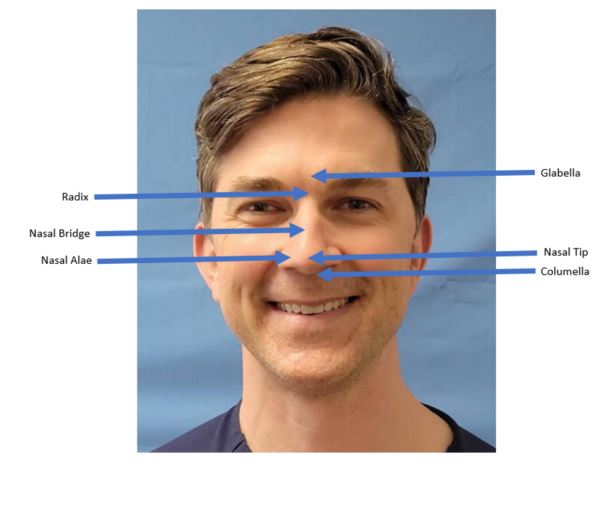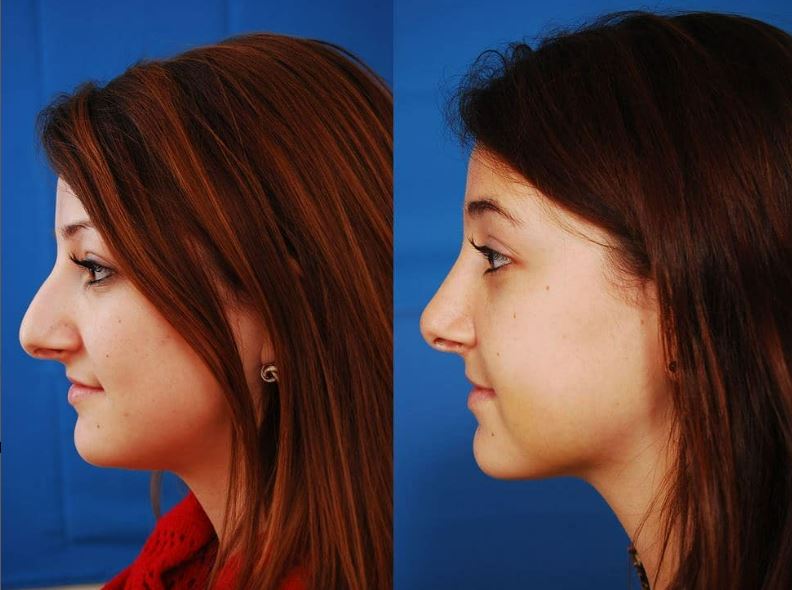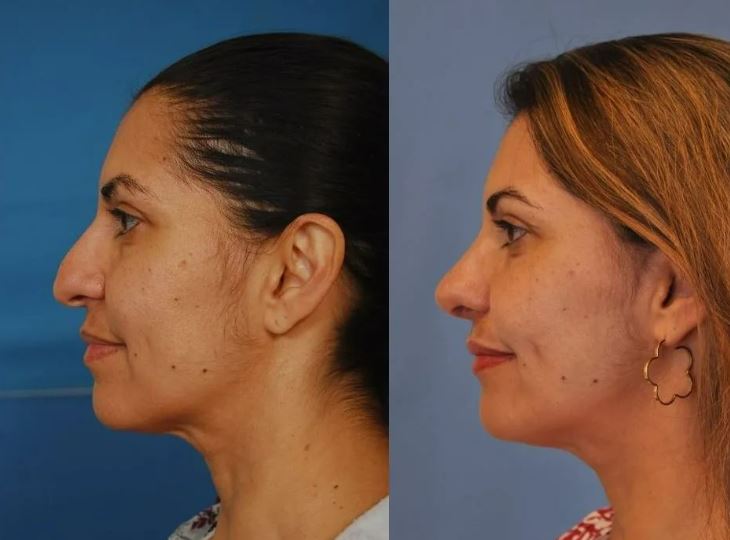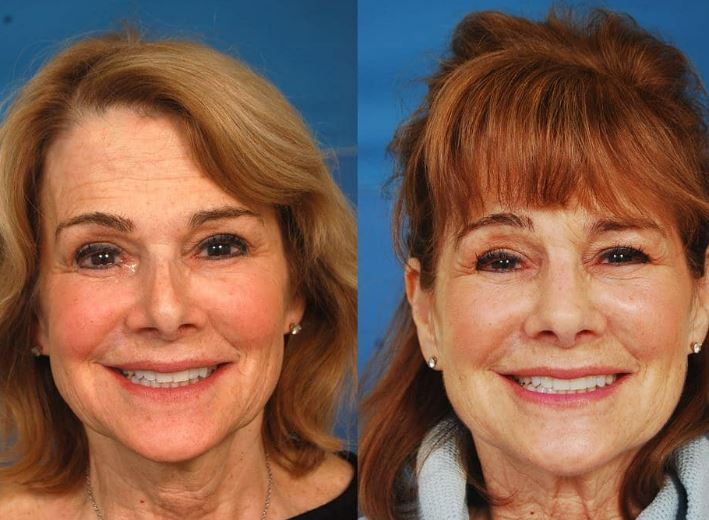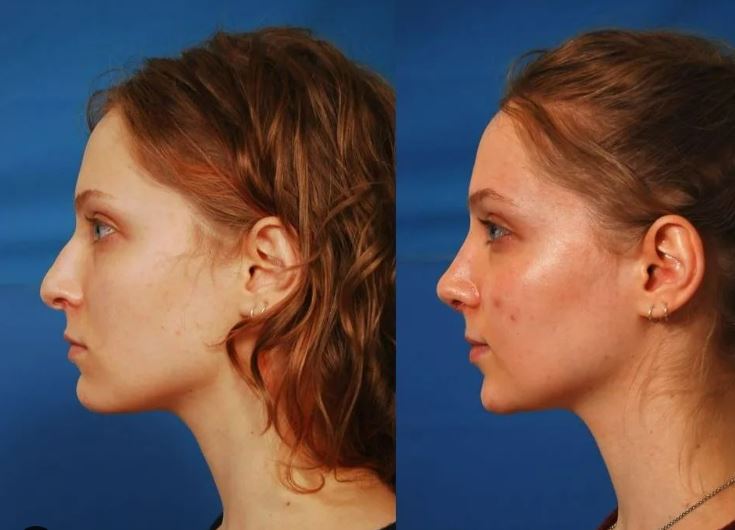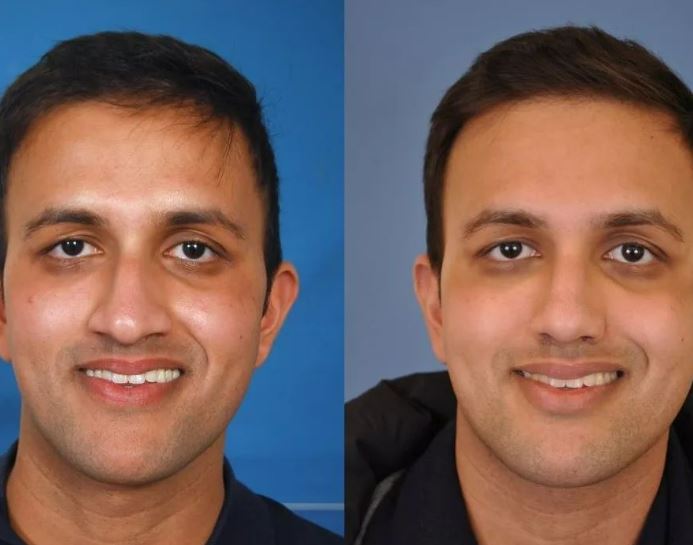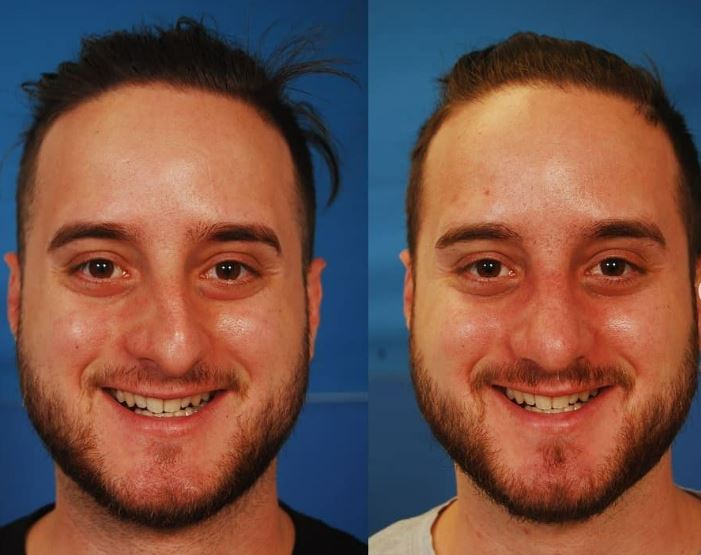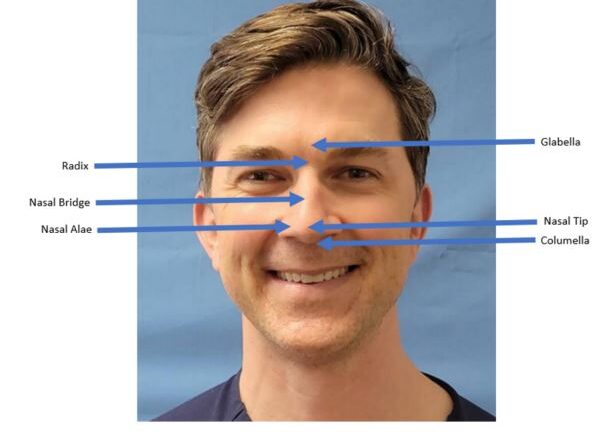
Different parts of a person’s nose they want changes
As a facial plastic surgeon, there are many different reasons patients seek my expertise for rhinoplasty, or “nose job” surgery, but they can be divided into 3 main categories: The “hump” or bump on the nasal bridge, the tip size and shape, and differences in nasal symmetry. Keep reading for more information about the three most common aspects of a nose that are addressed by rhinoplasty surgery.
Hump/Bump
The nasal bridge or dorsum is the part of your nose that starts at the radix (the deepest part of the nose between the eyes) and ends at the nasal tip. The bridge is flanked on either side by the nasal sidewalls, which are more shadowed, and can attribute to the wideness of your nose.
The “hard” parts of your nose are comprised of bone and cartilage. The nasal bone creates the structure in the top third of your nose, the middle is made up of the upper lateral cartilages, and the lower portion is supported by the lower lateral cartilages.
When looking at your profile, you may notice that the bridge of the nose has humps or bumps, often caused by the natural bone or cartilage structure in a person’s nose. Less often, trauma to the nose may cause an overgrowth of cartilage or fracture in the bone, which can result in a small irregularity or nasal bump.
Tip
The nasal tip is essentially the lower 1/3 of the nose. In general, the size and projection of the tip of your nose play a role in facial beauty and can be assessed based on “ideal” nasal proportions.
The tip should project away from the face approximately 55-60% of the total nasal length. The angle between the nose and the upper lip should be maintained between 95-105 degrees for women and 90-100 degrees for men. The base of the nose (widest part of the nostrils), is ideally no wider than the distance between the eyes.
Asymmetry
Nasal asymmetry may occur naturally or result from facial trauma. Asymmetry in the nasal bridge may be caused by the underlying bony and/or cartilaginous structures, which can also cause nasal obstruction. Patients with nasal obstruction may experience difficulty breathing through the nose, frequent sinus infections, or irritation of the nasal lining resulting in intermittent nose bleeding and/or chronically runny nose (take a look at my septoplasty page).
It is important to note that base asymmetry (looking at your nose from below) may be due to underlying maxillary (midfacial) structural asymmetry that is beyond the nose itself. It’s like putting a tent up on the side of a hill; it is very difficult to have a perfectly symmetrical tent if it is pitched on a slope.
These potential asymmetries in facial projection do not get directly addressed by rhinoplasty, but we do have tools to help minimize these differences. Most humans have some degree of asymmetry, and a comprehensive rhinoplasty evaluation will be sure to include this aspect.
While rhinoplasty can address the hump, tip, and certain aspects of asymmetry, it is essential to acknowledge the natural variations in facial projection. By considering the comprehensive evaluation of these factors, individuals can achieve personalized and harmonious results through rhinoplasty, enhancing their overall facial appearance and self-confidence.
Leave a reply

